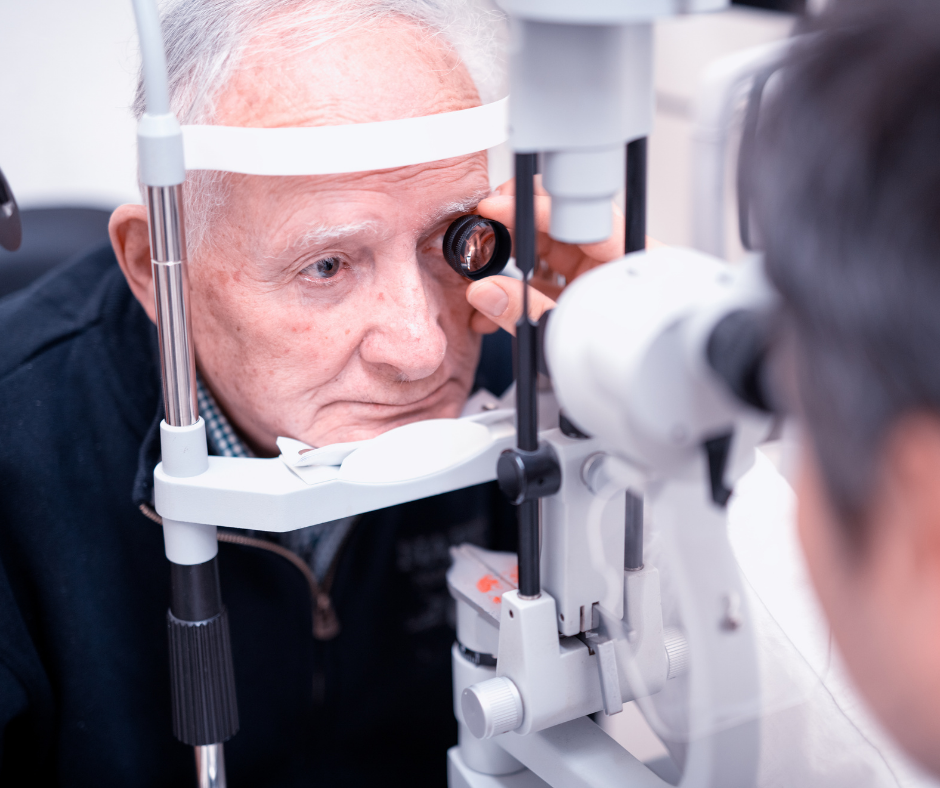While we strive to make our residents’ lives as comfortable and worry-free as possible, there are certain signs of aging that can’t be avoided. Glaucoma is a hereditary condition that leads to the pressurization of the inner eye, causing optic nerve damage and vision loss. Rarely, it’s caused by chemical or blunt force injuries, infections, and inflammation. It often appears in both eyes, but in some cases, it’s worse in one eye than in the other. Here, we’ll explain the symptoms of glaucoma, how it’s diagnosed, and how it is treated.
Recognizing Glaucoma Symptoms
Most community residents with glaucoma experience no pain or symptoms at first, and that’s why regular eye checkups are so crucial. When a person sees an eye doctor regularly, they’re more likely to diagnose the condition and treat it before permanent vision loss occurs. If you’re over 40, have a family history of the condition, or are diabetic, consider getting checked more frequently.
The earliest sign of glaucoma is a decline in peripheral vision, but it often goes unnoticed at first. When internal eye pressure rises significantly, a person may have blurred vision, headaches, eye pain, or the appearance of auras around light sources. If you’re experiencing any of these symptoms, make an appointment with your optometrist immediately.
Glaucoma Types
There are two different types of glaucoma, each with unique effects.
- Open angle glaucoma affects the trabecular meshwork, or the drainage structure inside the eye. While the system may look normal, fluid doesn’t drain as it should.
- Narrow angle glaucoma involves a narrowing of the angle between the cornea and the iris, which prevents the eye from draining properly. Narrow angle glaucoma is often linked to cataracts and farsightedness.
No matter which type of glaucoma you have, it’s important to seek treatment as soon as possible. With prompt diagnosis and treatment, it’s possible for community members to slow the progression of the condition.
Glaucoma Risk Factors
While glaucoma tends to affect older adults in an assisted living setting, even babies and children can be afflicted. The condition is more prevalent among African Americans, who tend to develop it earlier and suffer from more severe effects. If you’re older, of a certain descent, or take steroidal medications, you’re more likely to develop glaucoma.
How It’s Diagnosed
Today’s glaucoma tests are fast and painless. An eye doctor uses special drops to dilate the pupils before testing vision and examining the eyes. During the assessment, the doctor will assess the condition of the optic nerve, which shows certain signs in those with glaucoma. They’ll photograph the nerve to track the progression of the disease, then perform a tonometry test to check pressure in the eyes. In some cases, doctors also do visual testing to determine if a person has lost their peripheral vision.
Treating Glaucoma
As of now, there are three different ways to treat glaucoma. We’ll explain them in the sections below.
- Eye drops are used to increase eye drainage or reduce fluid formation. These drops come with certain side effects, which include blurry vision, eye irritation, allergies, stinging, and burning. If you’re using the drops, be sure to tell your doctor about the other medicines you’re taking to avoid potential interactions.
- Laser surgery may increase eye drainage and stop blockage in those with narrow angle glaucoma. A procedure known as trabeculoplasty opens the area, while iridotomy punctures the iris to allow for better drainage.
- Trabeculectomy allows an ophthalmologist to create new channels through which fluid drains, reducing eye pressure. In some cases, tubular implants are used to aid in drainage. The surgery may cause a degree of vision loss, as well as infection or bleeding.
Wide angle glaucoma is typically treated with a combination of therapies, including eye drops and trabeculectomy. Hereditary glaucoma is usually treated surgically because the problem is caused by defects within the eye’s drainage system. Your eye doctor can recommend a treatment that suits your needs.
Is Glaucoma Preventable?
Unfortunately, the condition cannot be prevented. If it’s diagnosed and treated early, however, its progression can be controlled. If you or someone you love has glaucoma, it’s important to seek treatment as soon as possible. With effective diagnosis and prompt treatment, many with glaucoma continue to enjoy clear vision and pain-free lives.
At Orchard Park of Kyle, we are here to help residents live life on their own terms. Whether you need memory care or simply want to live a carefree lifestyle, we are here to make it happen. Request additional information online or call today to schedule a tour.






